India’s New Criminal Codes and Justice-Delivery Reforms
Executive Summary
The year 2025 marks a transformative chapter in India’s legal history with the implementation of three new criminal codes — the Bharatiya Nyaya Sanhita (BNS), 2023, the Bharatiya Nagarik Suraksha Sanhita (BNSS), 2023, and the Bharatiya Sakshya Adhiniyam (BSA), 2023 — replacing the colonial-era Indian Penal Code (IPC), Criminal Procedure Code (CrPC), and Indian Evidence Act respectively.
These reforms aim to decolonize, digitize, and modernize India’s criminal justice system by focusing on victim-centric justice, digital evidence, and time-bound investigations.
However, while the government calls this a “people-centric overhaul,” legal experts remain divided — some view it as a bold modernization, while others caution that expanded police powers and implementation challenges could undermine its intended impact.
This blog explores the key changes, their implications for practitioners and citizens, and how they reshape India’s justice-delivery landscape.
The Need for Reform: From Colonial to Contemporary
India’s old criminal codes — the IPC (1860), CrPC (1973), and Evidence Act (1872) — were products of British colonial governance.
Critics argued they prioritized state control over citizens’ rights, often enabling bureaucratic delay and procedural rigidity.
The new codes, according to the Ministry of Home Affairs, were drafted after extensive consultations with judges, legal experts, and law commissions to make the law more citizen-focused, technology-driven, and aligned with contemporary India’s realities.
Key Features of the Bharatiya Nyaya Sanhita (BNS), 2023
The BNS replaces the Indian Penal Code and focuses on streamlining offenses, enhancing punishment for severe crimes, and introducing modern categories such as cybercrimes and organized crime.
Highlights:
- Terrorism, organized crime, and mob lynching are now explicitly defined and punishable.
- Community service has been introduced as a form of punishment for minor offenses — a first in Indian law.
- Enhanced penalties for sexual offenses, crimes against women and children, and crimes threatening national security.
- Murder (Sec. 101) and Rape (Sec. 63) provisions have been restructured for clarity and procedural speed.
Impact: The BNS aims to make the justice system more deterrent, but some critics note that broad definitions of “terrorism” could risk misuse if not carefully interpreted by courts.
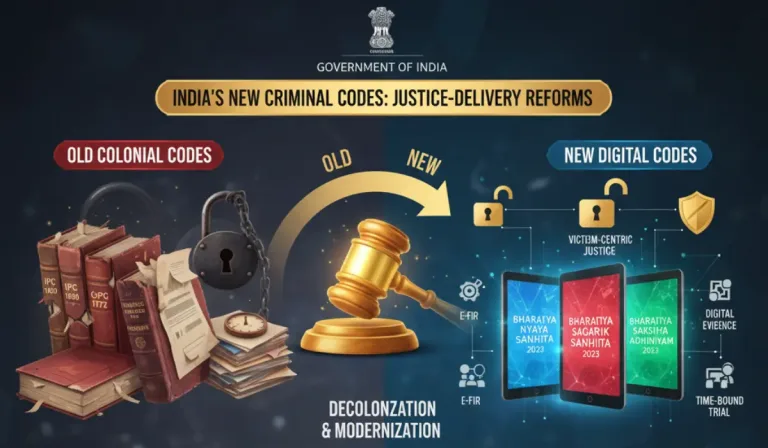
Bharatiya Nagarik Suraksha Sanhita (BNSS), 2023: Transforming Investigation & Trial
Replacing the Criminal Procedure Code (CrPC), the BNSS introduces key procedural reforms focused on digital transparency and timeliness.
Major Changes:
- Digital FIRs and e-records: FIRs can now be filed electronically, and all case records can be maintained digitally.
- Forensic evidence mandatory for offenses punishable by 7 years or more — integrating science into justice.
- Time-bound investigation: 180-day limit for filing charge sheets in serious offenses.
- Victim’s rights strengthened: Victims can now receive regular updates and have access to investigation progress.
- Trial in absentia: Allows prosecution even if the accused absconds — especially relevant for fugitives in financial crimes.
Impact: These measures could greatly reduce case pendency and improve conviction rates, but digital infrastructure gaps and training needs among police and judiciary remain major implementation hurdles.
Bharatiya Sakshya Adhiniyam (BSA), 2023: The Digital Evidence Revolution
The BSA replaces the Indian Evidence Act (1872) to reflect modern realities of data and digital communication.
What’s New:
- Electronic records, emails, and digital signatures are now fully admissible as primary evidence.
- Emphasis on metadata, blockchain logs, and digital certifications to authenticate digital proof.
- Simplified procedures for the collection, storage, and verification of digital data.
- Enhanced provisions for cybercrime cases, where digital evidence is central.
Impact: This reform acknowledges that crime in the 21st century is data-driven, and justice delivery must be too. However, data privacy safeguards and technical training for courts will be crucial.
How Practitioners and the Accused Must Adapt
For Lawyers:
- Need for digital literacy — understanding metadata, digital forensics, and blockchain evidence will be essential.
- Familiarity with new procedural timelines and mandatory forensic protocols is critical to avoid procedural lapses.
For the Accused:
- Stricter timelines mean faster proceedings, but also less room for procedural delay.
Digital documentation increases transparency but raises concerns about data manipulation and privacy.
Comparison: Old vs. New — A Quick Glance
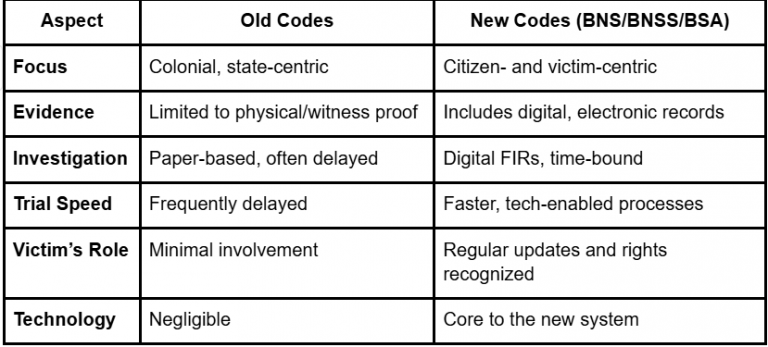
Challenges Ahead
While the reforms are visionary, they face several challenges:
- Infrastructure gaps: Many rural police stations lack digital tools and connectivity.
- Training deficit: Police, lawyers, and judges need hands-on digital evidence and forensic training.
- Implementation burden: With over 20,000 pending criminal trials, transition logistics are daunting.
Civil liberty concerns: Expanded police powers (e.g., extended custody) have drawn criticism from human rights experts.
Conclusion
The Bharatiya Nyaya Sanhita, Bharatiya Nagarik Suraksha Sanhita, and Bharatiya Sakshya Adhiniyam represent India’s most ambitious legal overhaul in over a century — a determined step toward digitization, speed, and decolonization of justice.
If implemented with transparency, training, and technological readiness, these laws could truly usher in a citizen-first justice system. But without adequate safeguards, India risks replacing one complex system with another — more digital, but not necessarily more just.
Sources & References
- Ministry of Home Affairs, Government of India – Press Release on New Criminal Laws, 2023
- PRS India – Bills Summary: Bharatiya Nyaya Sanhita, 2023; Bharatiya Nagarik Suraksha Sanhita, 2023; Bharatiya Sakshya Adhiniyam, 2023
- The Hindu (July 2024) – New Criminal Codes Come into Force: What Changes for Police and Courts
- LiveLaw (August 2024) – Legal Experts React to India’s New Criminal Law Regime


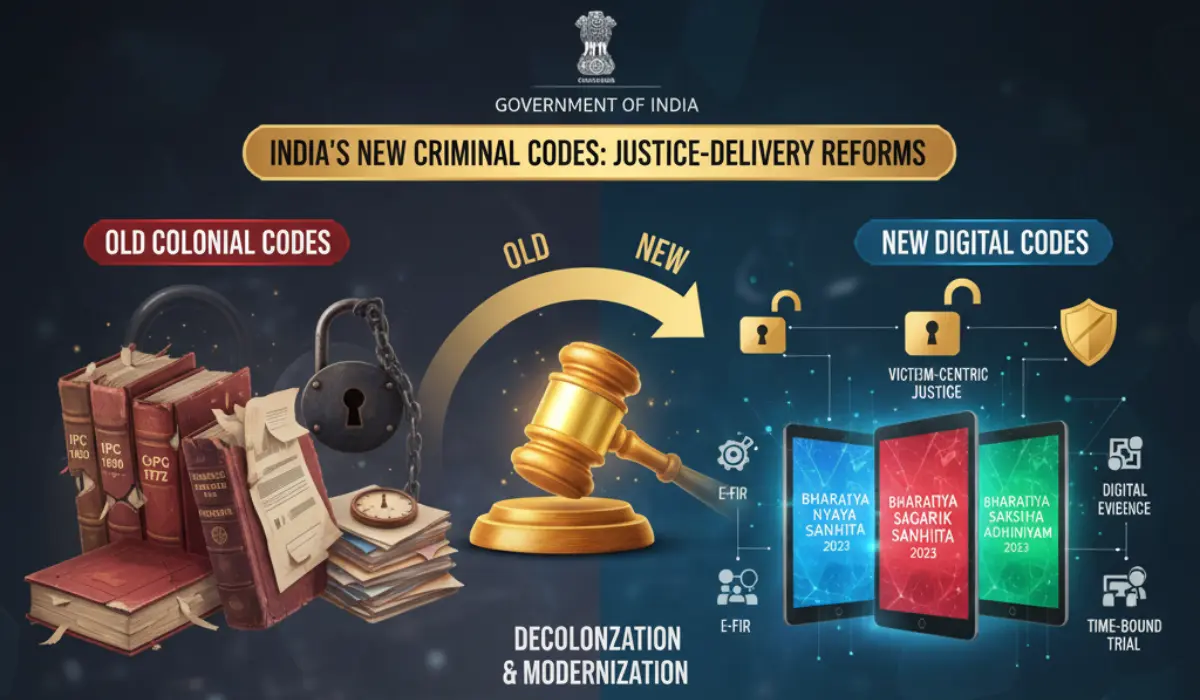


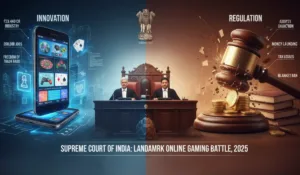
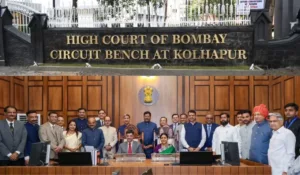



Add comment